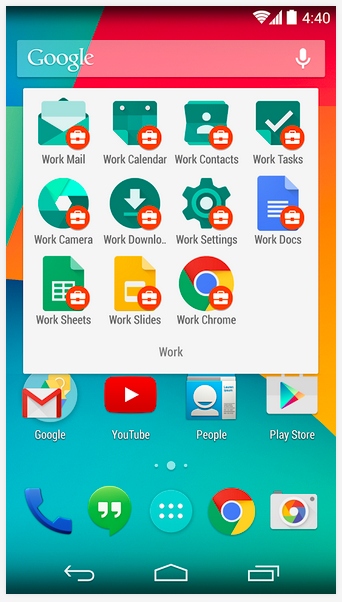Open for business: Android for Work shows up on Google Play


The app, which arrived on Google Play on Thursday, adds impetus to Google's plan to get more of the billion Android devices owned by consumers accepted by businesses as work devices.
Much like BlackBerry Balance, Android for Work aims to ensure personal data never meets its work counterpart, despite living on the same device. While Samsung has offered that capability to its devices through Knox, it wasn't available to other Android devices.
The Korean company helped Google deliver some key components of Android for Work, such as 'work profiles', which are native to Android 5.0 Lollipop thanks to its support for multi-user accounts. The Android for Work app is for older devices through to Android 4.0 Ice Cream Sandwich to Android KitKat 4.4, which covers the vast majority of Android phones in use today.
With the app installed, IT admins will be able to manage and isolate the work data and work apps. Google also offers businesses an app store to publish their own apps in the program.
As with Android for Work on Lollipop, devices with the app installed will need to be enrolled with one of the Google's partner mobile device management (MDM) providers, which include BlackBerry, Mobile Iron, VMware, and others.
Third-party apps that have jumped on board with the program so far include Adobe, Box, Concur, Salesforce, and SAP with its HR software Success Factors.
The program and support by third-party MDM vendors could give Google and Android OEMs an answer to Apple's seemingly unshakeable stranglehold on the enterprise. According to Good Technology, during the third quarter of last year iOS represented 69 percent of devices in the enterprise while Android accounted for 29 percent, with Apple's lead growing thanks in part to the iPhone 6 and iPhone 6 Plus.
Read more